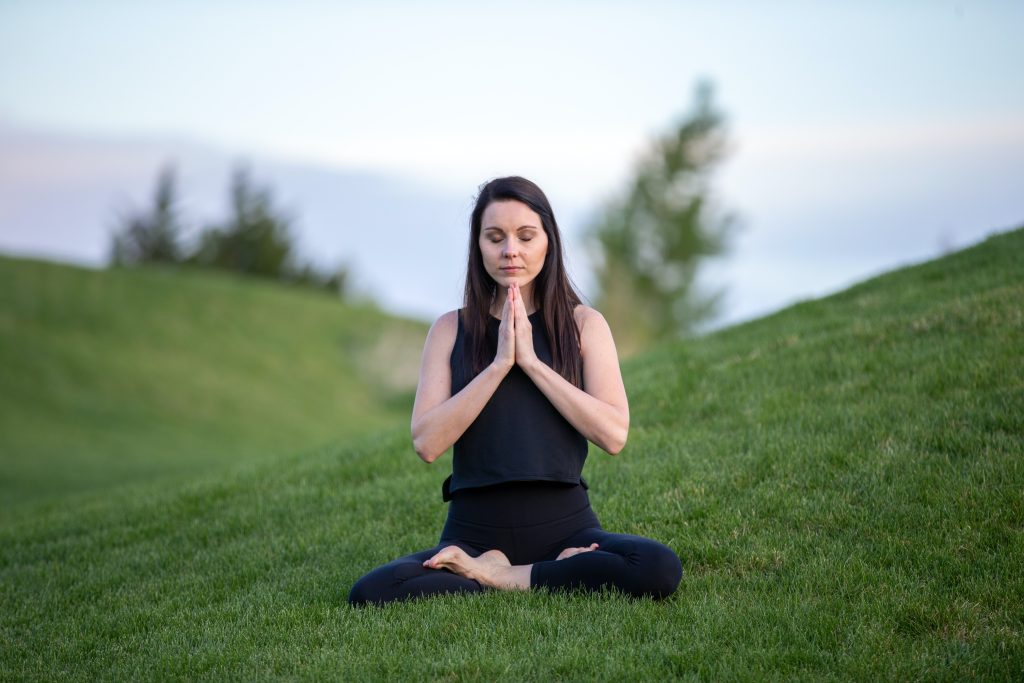7 easy tips for incorporating meditation into your daily routine
Meditation for beginners is simpler than many believe. You can start learning how to meditate today and establish this practice as a lifelong habit in just seven steps. The truth is, meditation can be effortless once you understand what it truly is and isn’t.
Meditation is an ancient practice that trains awareness, focus, compassion, and mindfulness. The term encompasses a variety of techniques designed to integrate mind and body. Its roots extend thousands of years back to ancient China and India. Traditional practices, such as Hermetic meditation, typically involve stillness, mantra repetition, and breath-focused exercises. While these age-old methods are transformative for many, they’re not always suitable for everyone. In our fast-paced Western world, individuals can find it challenging to integrate Hermetic meditation into their routines. Some even mistakenly fall asleep, believing they’re engaged in the practice.
This is where active meditation comes in. It’s a contemporary approach that fits the modern psyche.
It’s not just about “clearing the mind,” but about transforming challenges into actionable projects. Most meditation practices, in some way, focus on the goal of clearing, or at least quieting the mind. Sure, it can feel really good to press the pause button on relentless thought patterns; I’m not denying that. But as Mindvalley’s meditation coach Emily Fletcher says, “Asking your mind to stop thinking is like asking your heart to stop beating.”
You don’t need any special skills, you don’t need any formal training, and you don’t need prayer beads. In fact, let’s put the stereotypes to bed once and for all. Here is a list of things you absolutely do not need before becoming a “real” meditator:
Prayer beads
Yoga mat
Incense
Crystals
With meditation, all you need is yourself, somewhere comfortable to sit and take 20 minutes.
Let’s start at the very beginning, with these 7 steps that can help you evolve into the best version of yourself in the present moment.
1. Approach Meditation with Fresh Eyes
Throw away what you thought you knew about meditation. Embracing meditation with a beginner’s perspective is invaluable, even if you believe you’re well-acquainted with it. As brain expert, Jim Kwik, often points out, one of the biggest reasons people fail to embrace new information optimally is that they’re weighed down with prior “knowledge” about the subject. So, when you begin to meditate, approach it without setting any particular expectations for yourself. Dive in as if it’s your very first time.
2. Choosing the Ideal Time for Meditation
Timing isn’t just a detail; it’s a fundamental part of your meditation practice. As someone just starting on this transformative journey, pinpointing when you meditate is a foundational decision. From my own experience and perspective, I strongly advocate for mornings as the golden window for meditation. Here’s why: its all about planning your upcoming day, so if you’re practicing at eight o’clock in the evening, you haven’t got much of your “perfect day” left. Beginning your day with meditation acts like a primer for your mind and spirit. It sets a tone of calm, intention, and clarity, not just for yourself, but it ripples out to those you interact with throughout your day. Imagine the profound impact of starting your morning with practices of compassion, gratitude, forgiveness, and creative visualisation. Picture it—before the first sip of your morning coffee, you’ve already aligned yourself with the energy of success and fulfillment.
Lastly, when you first wake up, your brain is primarily operating at the alpha frequency—a state that is incredibly conducive for meditation. This isn’t just a theory; it’s backed by hard data, with brain wave patterns recorded and analysed through electroencephalography (EEG machines). When you choose to meditate in the morning, you are essentially syncing your practice with your brain’s innate rhythm. It’s like giving yourself a harmonious and potent head start to embrace the day with mindfulness and intention.
3. Communicate Your Meditation Time with People Around You
If you live alone, this one won’t be a problem for you. However, if your household is bustling with children, roommates, a partner, or lively pets, it’s crucial to set clear boundaries. It’s always a good idea to let whoever you live with know when and where you’ll be practicing and politely ask them not to disturb you. Do what you have to do. Promise your kids you’ll play with them afterward or tell your spouse you’ll make them breakfast. Just as long as they treat the fifteen to twenty minutes you’re taking for yourself as sacred.
4. Choose a place to practice
One of the foundational steps for beginners is identifying where you’ll be meditating. Personally, my preference is to sit upright in bed as soon as I wake up. While I opt for a cross-legged position with a pillow supporting my lower back, it’s essential to choose what’s comfortable for you. Maybe what feels right for you is extending your legs and placing a cushion under your knees. Whatever your preference may be, make sure your spine remains straight and relaxed, and your head is unrestricted. Whether your choice is a bed, a chair, or a spot on the floor, let it be a place where you feel at ease and connected. Your home is often the best sanctuary, but the world doesn’t stop when we travel or are in the office—so flexibility is key. However, it’s recommended not to lie down, as you might drift into sleep.
5. Just start
Now it’s time to enjoy meditation in real-time. Have your cell phone close, and open the chosen guided meditation to begin.
6. Inhale Deeply and Let The Track Guide You
It’s time to initiate your meditation session. As you embark on this journey, the guide will be there to steer you through each phase. By diving into this article, you’ve already equipped yourself with the foundational knowledge. Keep in mind, you don’t need to begin your session in a state of complete peace; that’s the meditation’s purpose. Embrace your present state, dive in, and relish the journey.
7. Bonus Step – Mid-meditation Movement
Please, don’t suffer through any form of discomfort during this meditation in the name of doing it “properly.” Contrary to popular belief, you don’t have to sit still when you meditate. Sure, it aids concentration, but movement isn’t banned by any stretch of the imagination. Please feel free to move when you need to. If your leg cramps up, stretch it. Do what you need to do, and then come straight back to it.
There you have it. Follow these steps, and you’ve set yourself up for a very productive session that will influence not only your upcoming day in a really positive way but your entire life. Instead of suppressing thought, meditation leverages the power of thought to unlock meditation’s true benefits. You can access my full quest, The 6 Phase Meditation on the Mindvalley app via membership or listen to The 6 Phase Guided Meditation for free on my Youtube channel.
By Vishen, the CEO and Founder of Mindvalley
Featured Photo by Benjamin Child on Unsplash.



